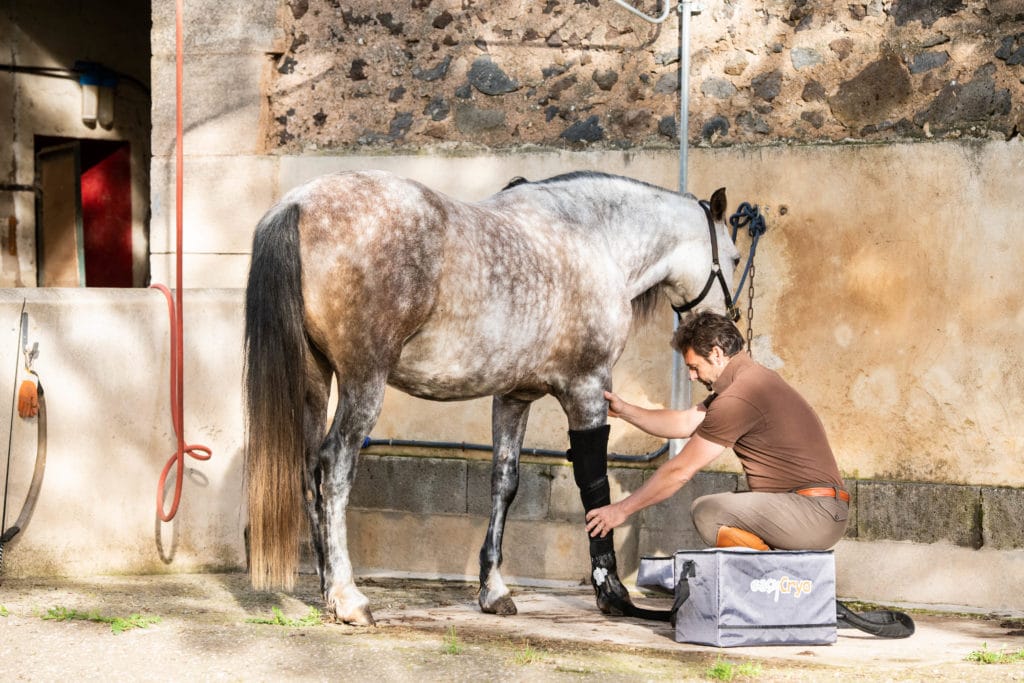A Solution for Horses
Compressive cryotherapy shortens horse injury recovery time. Veterinarians and horse trainers are relying on these two treatments to manage pain and inflammation

"We use the Moove on our competition horses"
John Doe – General Manager of Teams
Committed to Faster Recovery
This technology enables muscle preparation and recovery. The animal can suffer from shocks and trauma that will cause pain, mobility problems and even inflammation. Cryotherapy paired with compression therapy will penetrate deep tissues when the device is set to constant pressure or will promote proper blood flow with alternating pressures. Horses’ muscle pains and muscle weaknesses are immediately affected by compressive cryotherapy.
Our Equine Solution
Moove
The Moove is fully portable and fits the needs of veterinarians and horse trainers.
How Compressive Cryotherapy Works
Cryotherapy reduces the nerve conduction speed and reduces inflammation. A specific temperature will yield better results for specific indications. In opposition to simply putting ice, combining cryotherapy and compression results in effects for both superficial and deep tissues. Pressure enables deeper penetration of tissues while precise control over temperature prevent damaging superficial tissues.
Antalgic Effect
Cryotherapy slows down nervous conduction when the skin temperature reaches 15°C (59°F) or below. The Ice Compression solutions include a temperature probe that ensures that the adequate temperature is reached but that skin or nerve damage does not happen. Cryotherapy also capitalizes on the gate control effect, a theory that describes that painless sensations close the nerve “gates” to painful sensations. In order words, applying cold to a painful area will result in nerves feeling the painless cold and less the pain caused by the injury.
Myorelaxant Effect
Cryotherapy reduces muscle spasticity (unwanted contraction of a muscle) by relaxing the muscle. This effect can also lead to an increase in muscle resistance of 13% to 33%.
Vasomotor Effect
Sensory receptors are sensitive to two phenomena: temperature variations and pressure variations. The combination of cold and pressure therapies causes vasoconstriction followed by a reflex vasodilation that helps to drain the edemas. Studies have shown that compressive cryotherapy can cause a cutaneous vasodilation of up to 117% after only 20 seconds while simply applying cold will only provide 80% after 20 minutes.
Anti-inflammatory Effect
The thermal shock generated by cryotherapy greatly reduces enzymes causing inflammation. Cold causes an instantaneous and durable stop to the inflammation process.
